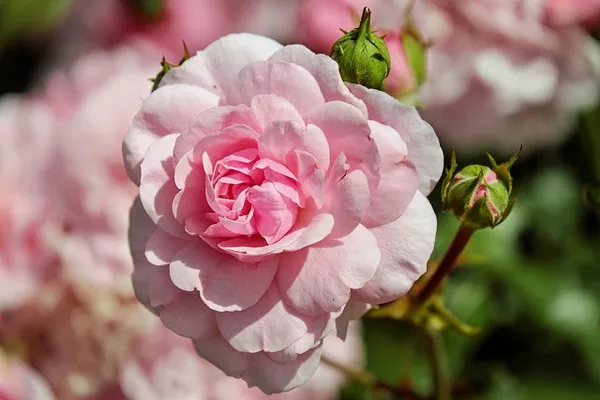The intricate relationship between bees and flowers is a fascinating phenomenon that has captivated scientists and nature enthusiasts alike. Bees play a vital role in pollination, aiding in the reproduction of flowering plants while securing their own sustenance. But what exactly attracts these remarkable insects to flowers? In this article, we will explore the captivating world of bee-flower interactions, unraveling the various factors that entice bees to visit and engage with specific floral species.
Visual Cues
Bees possess keen visual capabilities that help them navigate through nature’s vibrant tapestry. Flowers often utilize visual cues to signal their presence and attract pollinators. Bees are particularly drawn to bright, contrasting colors such as purples, blues, and yellows. These hues stand out against the surrounding environment, making them easier for bees to detect. Additionally, some flowers exhibit patterns called “nectar guides” that lead bees towards the nectar-rich parts of the flower. Bees have evolved to recognize and interpret these visual cues, enabling them to efficiently locate and access floral rewards.
Scent and Fragrance
The olfactory senses of bees are highly developed, allowing them to detect and distinguish a wide range of scents emitted by flowers. Floral fragrance is primarily produced by volatile compounds released from specialized structures like petals or scent glands. Flowers employ scents to communicate with bees, advertising the presence of nectar and pollen rewards. Different flowers emit specific fragrances that may vary in intensity, complexity, and even periodicity. Bees have innate preferences for certain scents, and their ability to detect these chemical signals guides them towards desirable floral resources. Furthermore, studies suggest that bees can associate certain scents with rewarding experiences, enhancing their attraction to particular flower species.
Nectar and Pollen Availability
The primary incentive for bees to visit flowers is the availability of nectar and pollen, essential sources of energy and protein. Nectar serves as a carbohydrate-rich food source, while pollen provides vital nutrients necessary for bee development and survival. Flowers that offer ample quantities of these rewards are more likely to attract bees. Additionally, bees have evolved specific adaptations, such as long tongues or specialized mouthparts, to access nectar within complex floral structures. The volume and concentration of nectar, as well as its sugar composition, influence a flower’s attractiveness to bees. Similarly, the quantity, quality, and accessibility of pollen grains play a crucial role in determining a flower’s appeal to bees.
Flower Shape and Structure
The physical characteristics and intricate structures of flowers also contribute to their allure for bees. Different bee species have varying tongue lengths, body sizes, and feeding behaviors, which dictate their preferences for specific flower shapes and structures. For example, long-tongued bees are often attracted to tubular-shaped flowers, as they can reach deep into the floral tube to access nectar reserves. Conversely, short-tongued bees may favor open-faced flowers with easily accessible nectar. Furthermore, flower structures that provide stable platforms for bees to land upon during feeding, such as petals or sturdy inflorescences, enhance a flower’s desirability.
Timing and Blooming Patterns
Flowers have evolved intricate timing mechanisms to ensure they attract pollinators when their reproductive organs are ready for transfer. Many flowers exhibit precise blooming patterns synchronized with the daily rhythms of bees. They bloom during specific times of the day when bees are most active and receptive to foraging. Some flowers even release nectar in pulses, attracting bees multiple times throughout the day. Additionally, the timing of flowering in relation to the bee’s annual life cycle is crucial. Certain flower species synchronize their blooming with the emergence or seasonal activity of specific bee populations, ensuring an available audience for successful pollination.
UV Reflectance and Polarization
Bees possess remarkable sensitivity to ultraviolet (UV) light, which humans cannot perceive. Some flowers have evolved unique UV reflectance patterns on their petals or other floral parts, creating distinct visual signals specifically tailored for bees. These patterns guide bees toward the center of the flower, where nectar and pollen are located. Additionally, bees can detect polarized light, which helps them navigate and orient themselves within their environment. Flowers may exhibit polarization patterns visible only to bees, serving as further attractants by providing a distinctive visual signature.
Conclusion
The intricate relationship between bees and flowers is based on a remarkable interplay of sensory cues and adaptations. Through visual cues, fragrances, nectar and pollen availability, flower shape, timing, and even UV reflectance and polarization, flowers entice bees to visit and facilitate the crucial process of pollination.


